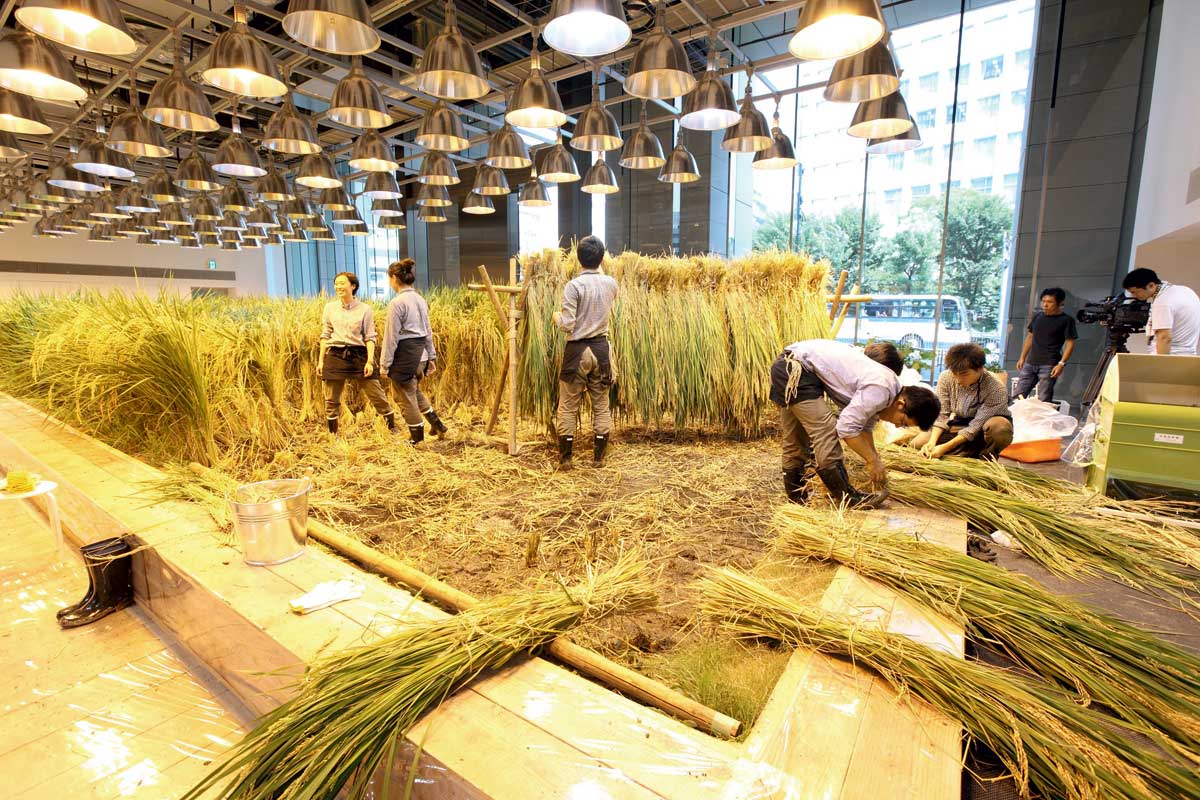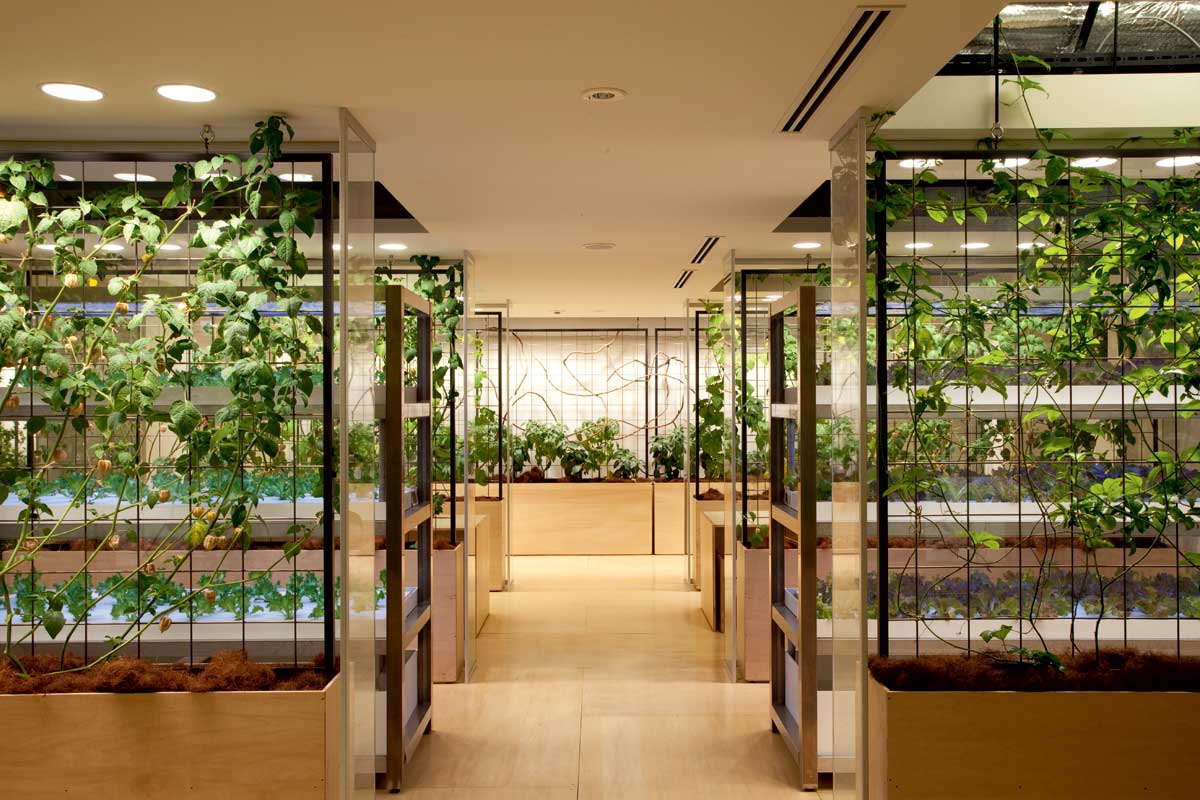Agricultural Aftershocks: How Japan is Combatting a Decline in Farming
Still reeling from the 2011 nuclear disaster, Japan also faces an aging farmer population. Now, the private sector is offering solutions to the nation’s food-security fears.
Agricultural Aftershocks: How Japan is Combatting a Decline in Farming
Still reeling from the 2011 nuclear disaster, Japan also faces an aging farmer population. Now, the private sector is offering solutions to the nation’s food-security fears.

The meltdown at the Fukushima Daiichi power plant spewed radioactive cesium that contaminated the surrounding soil and water, poisoning public sentiment against the region’s crops for years to come – even after it became clear that many local farms had been unaffected.
“In the year after the disaster, our sales were 150 million yen [nearly two million in U.S. dollars] below what we expected,” says Hiroshi Takeda, who leads the Varesh cooperative in Fukushima. The losses reduced his membership from 340 to 200 farms.
But the $160 billion in damage to Japan’s agriculture and fishery industries was just the latest in a long run of setbacks the country has suffered on the food-security front. Though reforms instituted in the aftermath of World War II had drastically improved the California-size country’s self-sufficiency, the ensuing decades saw farmers abandoning the profession in droves. In 1965, 73 percent of the calories consumed in Japan were being produced there, compared with only 39 percent by 2010. During that same period, the area of land being cultivated had shrunk from 15 million to 11 million acres. The average age of a Japanese farmer climbed from 59 to 66 between 1995 and 2011. And the sudden displacement of 110,000 Fukushima residents effectively retired many other growers several years before they were ready.

City Farm Odaiba, which sits atop a high-rise overlooking Tokyo Bay, on the manmade island of Odaiba, represents one of many initiatives aimed at reversing the farm-sector decline. Established in 2012 by real-estate behemoth Mitsui Fudosan as a kind of refuge for elderly farmers who had fled Tohoku after the tsunami, the community farm – with rice paddies, soybean fields, staked tomatoes, raised beds, and a flock of resident chickens – quickly became something more than a place for the displaced people to dirty their trowels. “The old farmers get to pass on their skills to a younger generation of people in the city,” says Taro Ebara, a Tokyo University of Agriculture graduate employed by Odaiba to oversee the farm. “And anyone who helps with the cultivation gets to take food home.”
The corporation reserves some of the plots for growing its own produce, which it sells at a local farmers market, but most of the rooftop space is the domain of the farmers, who offer free classes on topics like transforming rice into sake.
Urban farms and subsidized lettuce projects are all well and good, but are they enough to save a dying – and crucial – industry?
Across the bay, Tokyo’s largest urban farm stands nine stories high, filling 215,000 square feet of precious real estate in the city’s busy financial center. The Pasona Group, Japan’s second-biggest staffing company, renovated the 50-year-old building in 2010 and began paying specialists to school its desk-bound employees in farming techniques. “One of the industries we serve is agricultural,” says Ryo Nakamura, a Pasona employee. “Turning our headquarters into an urban farm helps us show people there’s more to agriculture than plowing fields in the country.”
The building, the bottom two floors of which are open to the public, has become something of a tourist destination. Lobby receptionists greet visitors from beneath latticework heavy with cucumbers and tomatoes ripening on the vine. Across the hall, tall glass cases hold passion fruit vines and lemon trees. In a room the size of a basketball court, employees in knee-high boots harvest rice; cafeteria cooks will incorporate the resulting grain into staff meals.
Another company is making a difference right where the disasters hit. Fujitsu, a tech firm with a large plant in Fukushima, used governmental subsidies intended to reverse the prefecture’s fortunes as an opportunity to pivot, diverting resources from its slowing microchip operation to a new hydroponic farming venture. Now, 30 employees who once worked on the microchip assembly line don the same lab coats and face masks to tend greens targeted to the country’s aging population. (The lettuce’s reduced levels of potassium render it easier for ailing kidneys to digest.) Sold in grocery stores throughout Japan, the lettuce is the first in a series of “clean vegetables” Fujitsu plans to market nationally.


The country’s new crop of high-tech growing establishments should place Japanese farmers in a position to better face what may prove the agri-cultural sector’s biggest challenge yet. In February, the government signed a free-trade pact with the United States and several other nations. Assuming it gets through U.S. Congress later this year, the Trans-Pacific Partnership (TPP) will give Japanese consumers easier access to pork from Canada, beef from Australia, and butter from New Zealand. The TPP will also open up opportunities to export more goods, including the country’s famous Wagyu beef and countless varieties of sake made from domestic rice – a shift that could result in significant revenues. But the arrangement will also mean increased competition. Urban farms and subsidized lettuce projects are all well and good, but are they enough to save a dying – and crucial – industry? City Farm Odaiba’s Taro Ebara remains hopeful. After all, he points out, he is the son of a farmer, and his father was, too.
Joshua Hunt is a Tokyo-based writer whose work has appeared in the New Yorker and the Atavist Magazine.
Follow us
This work is licensed under a Creative Commons Attribution-NoDerivatives 4.0 International License.
Want to republish a Modern Farmer story?
We are happy for Modern Farmer stories to be shared, and encourage you to republish our articles for your audience. When doing so, we ask that you follow these guidelines:
Please credit us and our writers
For the author byline, please use “Author Name, Modern Farmer.” At the top of our stories, if on the web, please include this text and link: “This story was originally published by Modern Farmer.”
Please make sure to include a link back to either our home page or the article URL.
At the bottom of the story, please include the following text:
“Modern Farmer is a nonprofit initiative dedicated to raising awareness and catalyzing action at the intersection of food, agriculture, and society. Read more at <link>Modern Farmer</link>.”
Use our widget
We’d like to be able to track our stories, so we ask that if you republish our content, you do so using our widget (located on the left hand side of the article). The HTML code has a built-in tracker that tells us the data and domain where the story was published, as well as view counts.
Check the image requirements
It’s your responsibility to confirm you're licensed to republish images in our articles. Some images, such as those from commercial providers, don't allow their images to be republished without permission or payment. Copyright terms are generally listed in the image caption and attribution. You are welcome to omit our images or substitute with your own. Charts and interactive graphics follow the same rules.
Don’t change too much. Or, ask us first.
Articles must be republished in their entirety. It’s okay to change references to time (“today” to “yesterday”) or location (“Iowa City, IA” to “here”). But please keep everything else the same.
If you feel strongly that a more material edit needs to be made, get in touch with us at [email protected]. We’re happy to discuss it with the original author, but we must have prior approval for changes before publication.
Special cases
Extracts. You may run the first few lines or paragraphs of the article and then say: “Read the full article at Modern Farmer” with a link back to the original article.
Quotes. You may quote authors provided you include a link back to the article URL.
Translations. These require writer approval. To inquire about translation of a Modern Farmer article, contact us at [email protected]
Signed consent / copyright release forms. These are not required, provided you are following these guidelines.
Print. Articles can be republished in print under these same rules, with the exception that you do not need to include the links.
Tag us
When sharing the story on social media, please tag us using the following: - Twitter (@ModFarm) - Facebook (@ModernFarmerMedia) - Instagram (@modfarm)
Use our content respectfully
Modern Farmer is a nonprofit and as such we share our content for free and in good faith in order to reach new audiences. Respectfully,
No selling ads against our stories. It’s okay to put our stories on pages with ads.
Don’t republish our material wholesale, or automatically; you need to select stories to be republished individually.
You have no rights to sell, license, syndicate, or otherwise represent yourself as the authorized owner of our material to any third parties. This means that you cannot actively publish or submit our work for syndication to third party platforms or apps like Apple News or Google News. We understand that publishers cannot fully control when certain third parties automatically summarize or crawl content from publishers’ own sites.
Keep in touch
We want to hear from you if you love Modern Farmer content, have a collaboration idea, or anything else to share. As a nonprofit outlet, we work in service of our community and are always open to comments, feedback, and ideas. Contact us at [email protected].by Joshua Hunt, Modern Farmer
March 23, 2016
Modern Farmer Weekly
Solutions Hub
Innovations, ideas and inspiration. Actionable solutions for a resilient food system.
ExploreExplore other topics
Share With Us
We want to hear from Modern Farmer readers who have thoughtful commentary, actionable solutions, or helpful ideas to share.
SubmitNecessary cookies are absolutely essential for the website to function properly. This category only includes cookies that ensures basic functionalities and security features of the website. These cookies do not store any personal information.
Any cookies that may not be particularly necessary for the website to function and are used specifically to collect user personal data via analytics, ads, other embedded contents are termed as non-necessary cookies.
I would like to subscribe to the weekly news letter 🙂